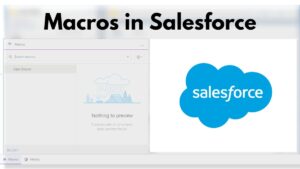Demand forecasting is crucial for manufacturers, as it ensures that production and procurement targets align with future sales predictions. Overestimating can result in surplus inventory, while underestimating can lead to customer dissatisfaction and last-minute production shifts. Traditional ERP-based forecasting methods often fall short due to their reliance on static data, making it challenging to predict dynamic market changes. However, modern technologies are transforming the landscape, enabling manufacturers to forecast demand more accurately and meet customer expectations.
What Demand Forecasting Can and Can't Do
ERPs play a pivotal role in demand forecasting, storing vital information on production, shipments, supply chains, financials, labour, and machinery. Despite their importance, ERPs can be problematic due to their complexity and varied integration capabilities. Many manufacturers have multiple ERPs accumulated over time, complicating data sharing and integration.
Typically, ERP data feeds into demand planning software, which uses historical trends and seasonal patterns to forecast demand. However, the accuracy of these forecasts depends on the quality and comprehensiveness of the underlying data. Over 80% of manufacturers cite inaccessible data, legacy tools, and isolated teams as obstacles to effective forecasting.
Moreover, historical data may not always accurately predict future demand, especially in rapidly changing markets. The COVID-19 pandemic, for instance, highlighted the limitations of relying solely on past data. As a result, manufacturers are seeking new approaches and tools to enhance forecasting accuracy.
Watch our demo on Master Manufacturing with Salesforce: Sales Agreements & Account-Based Forecasting
Impact on Sales Agreement Fulfillment
In addition to forecasting future sales, manufacturers must account for existing sales agreements to ensure they can meet customer volume commitments. Failing to do so can result in financial losses and strained customer relationships. Visibility into inventory and order fulfillment is essential to avoid such issues.

Manufacturers also face challenges when customers do not adhere to agreed order quantities or schedules. Enhanced visibility into late or delinquent orders allows manufacturers to adjust forecasts and update the sales and operations process accordingly.
The Challenge of Getting the Right Information at the Right Time
Manufacturing executives often rely on high-level meetings with production and sales managers to supplement ERP data with current supply and demand insights. However, various factors can hinder the effective use of this information. Sales managers may overestimate demand to ensure product availability, leading to excess inventory. Additionally, valuable insights from sales teams are not always formalized and shared with executives, resulting in incomplete demand indicators in forecasting systems.
How Salesforce can help?
Salesforce’s greatest advantage lies in its ability to connect disparate systems and data sets, enabling manufacturers to make sense of and capitalize on them. Manufacturers can consolidate data from various ERPs using Salesforce platform, creating a single source of truth. This allows for instant access to demand levels, segmented by time, business unit, region, or other variables, presented in easy-to-understand formats. Incorporating detailed demand information from sales notes can reveal previously unseen trends, adding a new dimension to forecasts.
Manufacturers have increasingly adopted Salesforce’s sales and operations planning. By 2023, nearly half of all manufacturing software will be cloud-based. Seventy-seven percent of manufacturers using cloud solutions now automate most or all of their forecasting processes, enabling rapid adaptation to market changes.
In summary, Salesforce’s scalability, security, collaboration, and automation capabilities significantly enhance operational efficiencies, allowing manufacturers to match product capabilities with customer needs better and improve forecasting accuracy.
How Areya Can Assist?
Watch our demo on Master Advanced Account Forecasting and Dominate Your Manufacturing Market with Areya!
Areya Technologies specializes in helping manufacturers enhance their forecasting capabilities through Salesforce solutions. As experts in Salesforce implementations, we offer comprehensive advisory, implementation, and managed services to unify your ERP data and improve demand predictions. Our tailored solutions ensure you stay ahead of market changes and meet customer expectations efficiently.









